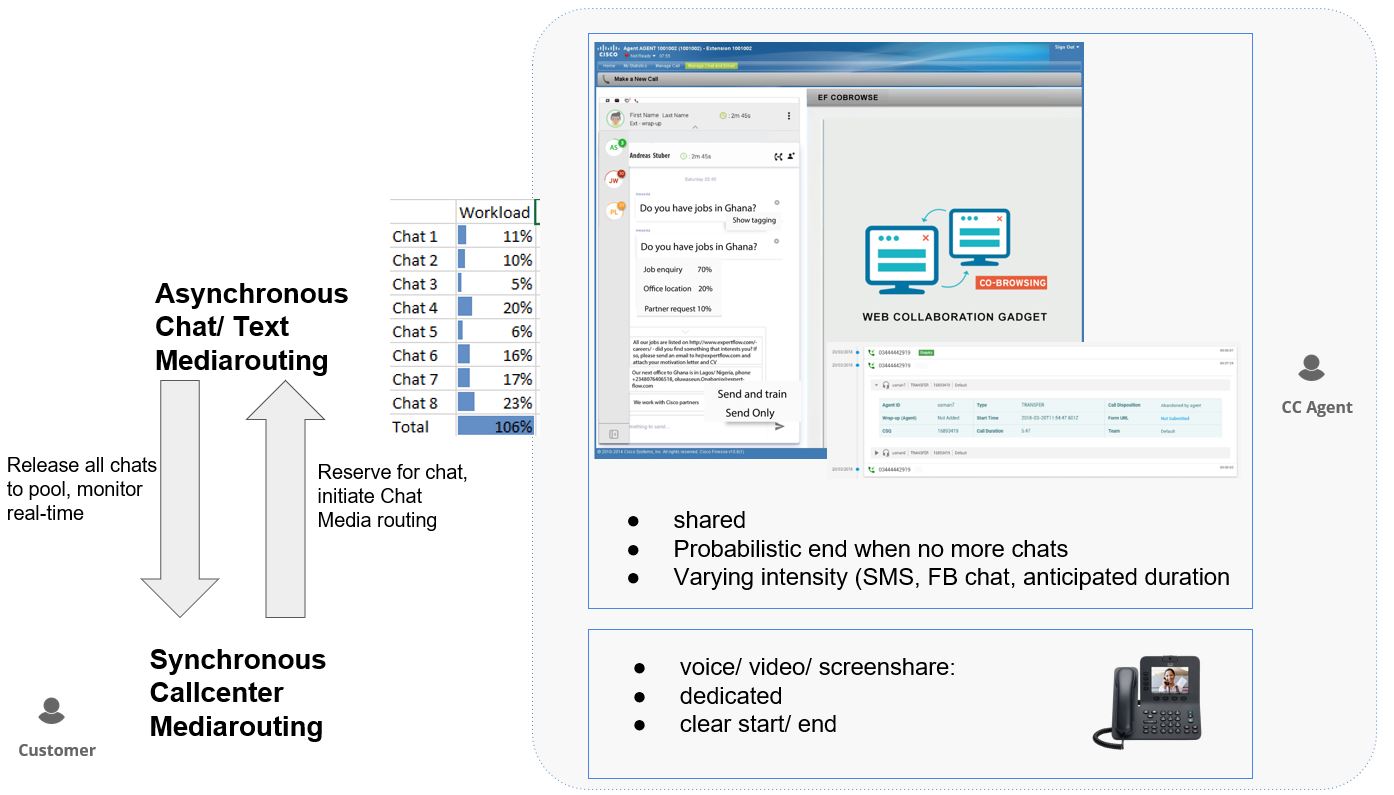The mediarouting engine of a contact center is typically designed to distribute full-time tasks to dedicated human agents. This is required for synchronous full-time media such as voice, video and screenshare.
For chat on the other hand, an agent can mange multiple sessions part-time asynchronously at the same time, especially if he’s assisted by a bot.

This new routing mechanism would enhance the existing mediarouting by Expertflow, which currently manages it’s own dedicated Mediarouting domain and interacts with the synchronous routing engine of a contact center.
The new feature is that this new async media routing engine continuously predicts anticipated intensity and human work volume for every chat with Machine Learning/ AI, based on the type of unserved recognized intents, the type of media (SMS is slower than FB Chat). It then assigns multiple chats in parallel to agents, ensuring that each agent has the same work volume. If an agent is fully charged, it then makes a synchronous mediarouting request to the contact center to reserve the nextfull-time agent. Conversely, if a chat session becomes a full-time www-collaboration session, all other ongoing chats are given back to the general chat pool and distributed to other agents, and that agent is reserved for the full-time session. In that way, we are also integrating WWW-Collaboration/ Screensharing solutions such as Cisco Remote Expert Mobile, Cisco Webex Teams or unblu into the chat framework.
